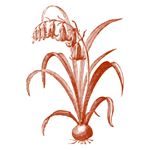When I was in sixth grade, a teacher divided the three or four classes by gender. One of the teachers came into the girls’ room and gave us a talk about our changing bodies and a sample box of mattress-sized Kotex sanitary napkins. It wasn’t quite the rite of passage at which other cultures seem to excel. In fact, it wouldn’t have qualified as a celebration of any kind. It was simply an awkward info dump with a lovely parting gift, but at its state-mandated minimum, at least the education day acknowledged the new things that were happening to the bodies of all us eleven- and twelve-year old girls at Mark Twain Elementary School.
I’ve often said that women over 40 or so could use a class of some kind about our changing lives at mid-life. (Maybe they’d make us return the Kotex at this class, a ritual acknowledging the beginning of menopause.) Learning how to navigate the physical, emotional and spiritual changes at this age are just as disorienting as the onset of adolescence.
Well, there may not be a class, but there is a thoughtful independent study tool called Embracing Your Second Calling: Find Passion and Purpose For The Rest Of Your Life (Nelson, 2009). Author Dale Hanson Bourke addresses the emotional, spiritual, and vocational transformation that must happen to us during these years. This meaty book doesn’t rely on shopworn Christian cliches; in fact, Bourke’s transparency about her own ambitions, losses, bitternesses and stumbling steps into her new mid-life life are a refreshing companion on the journey to surrendering to God’s purposes for the rest of our lives:
…it’s a willingness to find a new identity and to let that identity be defined by a holy calling rather than what other people believe you should be doing. What strikes me is how counterintuitive this sense is. Few decisions made in our second stage of life represent a natural progression toward what has been built in the first half of life. It’s as if we have to completely turn our backs on our first-half identities in order to fully invest in our second callings.
Her discussion on idolatry (Chapter 6) is worth the price of the book as she confronts our sources of consolation and urges us toward the Worthy One. The book helped me loosen my grip on my past identity in order to turn toward the future with a little less fear than I’d been hosting in my soul the last few years.
And just as they didn’t hand us those boxes of Kotex in first grade, where we probably would have used them for an art project, I would say that this is the kind of book that won’t make sense to a thirty-one year-old. It needs to be read when you’re in the swirl of mid-life, trying to come to terms with where you’ve been – and where you’re going in the short time the mid-life you has left on this globe.
If you use the link below to order the book from Amazon, you’ll be supporting this website with your purchase.





